This article was updated on January 2nd, 2023
Exercising older dogs is an important part of their daily care, but it can be difficult to know how much is enough – or too much
As dog’s age they naturally become less active and energetic, and there are lots of reasons for this…
Weight gain, arthritis, anxiety, even something seemingly unrelated to the ability to move (such as failing eyesight) can make Fido reluctant to get out and about in the way that he used to.
But a body that doesn’t move isn’t healthy, and immobility increases the risks of all sorts of conditions including heart problems, joint issues such as arthritis, obesity and more.
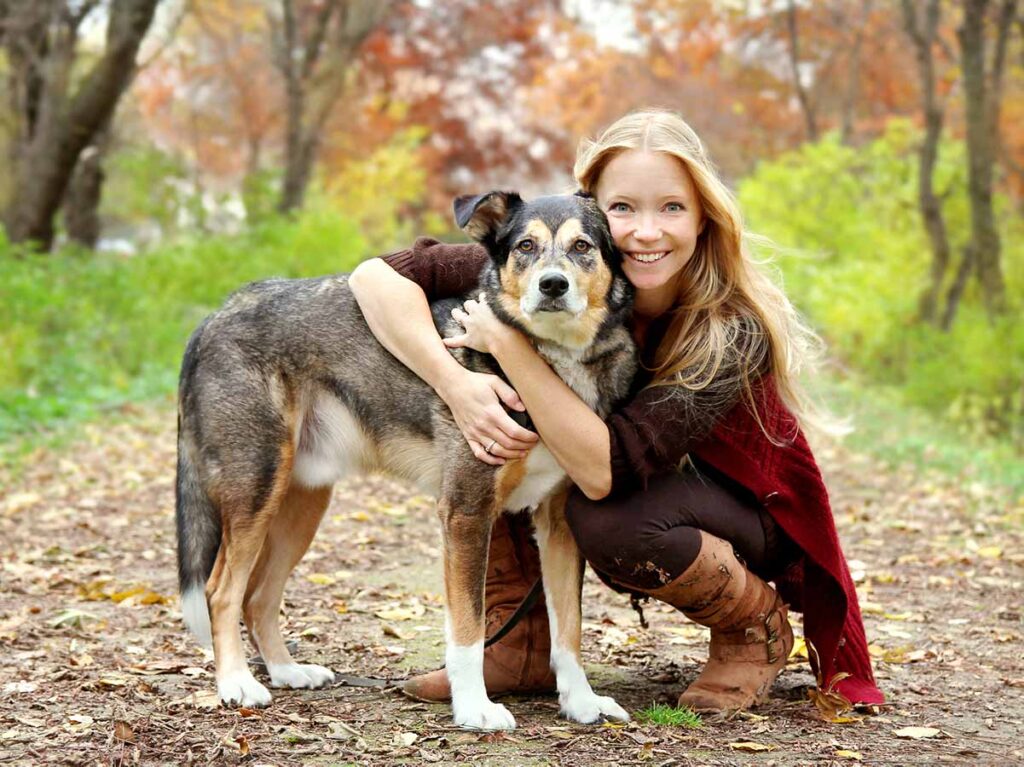
Regular, gentle and appropriate daily exercise helps keep an older dog’s joints, ligaments and muscles strong and supple, improves blood flow, reduces pain and/or inflammation, boosts his mood and improves his overall quality of life.
Wow, who knew exercising old dogs had so many benefits?
Well, now YOU know, but there is such a thing as too much exercise for older dogs; let’s take a look at how you can exercise your senior dog in a way that’s both safe and beneficial.
5 Tips to Help Exercise your Senior Dog
Use these quick links to jump directly to a specific section of this page, or simply scroll down to find all the tips and information that you need to help your best friend stay active for as long as possible…
- The importance & benefits of a daily walk
- Other ways to exercise older dogs
- How to know how much exercise is too much
- Products that can help with mobility
1. Keep it Simple: The Humble, But Effective, Daily Walk
For humans of all ages, walking is considered to be one of the very best exercise options…. and this holds true for dogs too.
Always check with your veterinarian before embarking on a new, or increased, exercise regime with your old dog. Most dogs are used to being walked regularly, but if your golden oldie has been sedentary for some time, talk to your vet before adding even a daily walk to Fido’s schedule
The vast majority of dogs love to walk. They like to sniff everything, greet everyone, wander here and there and generally enjoy the great outdoors.
And most senior dogs will still enjoy, and benefit from, a daily walk. It’s a great way to add some stimulation into their life.
But rather than a full-out hike or even a brisk walk, your older dogs’ outings need to be taken at a slower pace, and you’ll need to give more thought to where, and when, you take your daily ‘constitutional’.
Here are some thoughts to help you plan your older dogs exercise routine…
2. Pay attention to the temperature outside
Senior dogs can have more difficulty regulating their temperature than younger dogs do.
If it’s hot outside this can put extra strain on an older heart and your golden oldie will tire more quickly. Heat stroke is a real threat, so be sure to always carry plenty of water for your dog.
If it’s cold, he’ll likely feel the chill more than he used to and a nice warm sweater or jacket can help keep old bones warm and comfortable.
Doggy boots are good in wet, snowy, or icy weather too.
3. Make sure the walking surface is suitable
This might sound strange, but it’s important. Think about where you intend to walk your dog and if they might struggle with the ground surface.
Older dogs may have mobility issues or joint problems which make them a little less steady on their feet than they used to be.
Walking on firm, level ground which has reasonable traction (asphalt, concrete, level grass, gravel etc.) is easier for them than any slick or uneven surface. Invest in gear that is specific to the needs of your dog, for example, a harness, so that you can better support them.
Avoid parks or open grassy areas which have hills, ditches or potholes/gopher holes. Any of these could cause your older dog to damage cartilage, tendons or even break bones if they were to trip or slip.
Also stay away from slick floors such as those in stores, malls or painted/treated concrete which can be very slippery.
Don’t let your dogs claws grow too long either, as this can reduce their grip on the ground.
There are socks and boots which can help your senior dog keep traction on slick surfaces and if Fido will wear these it opens up more possibilities – but there’s nothing to fend off the dangers of uneven ground.
4. Keep to familiar routes
With age, many of a dog’s senses deteriorate and lots of older dogs have reduced eyesight, hearing, or smell.
This can make them anxious in new surroundings, so seniors generally feel more relaxed and happier on routes that are familiar to them.
While you may think a new route will be stimulating, in reality it may only confuse your dog more.
Senior dogs suffering from Old Dog Syndrome can get easily confused or frightened so continuity and familiarity will help.
5. Follow his signals & use common sense
You’ll probably find that your senior dog will let you know what he can do, and what he can’t. What he wants to do and what he doesn’t.
If he walks comfortably for half a block and then starts to lag, turn around and head home.
If he wants to stop every two minutes, let him do so.
If he seems happier to walk in the morning rather than the evening, give him that opportunity.
Most of the time your dogs’ body will give him the right advice. With one important exception… when he feels the need to keep up with YOU!
To your senior dog, you’re his whole life, and he will do anything he possibly can to stay by your side and make you happy.
If you walk quicker than is comfortable for him he’ll still try to match your pace, but will overdo himself in the process.
When you keep going, well past the point where his body is tired and stressed… he’ll keep going too.
If you decide to walk at noon when it’s 90F outside, he’ll go with you – same applies if it’s 6 am on a winter morning and 20F outside.
Things to Remember…
What’s important to take away from these scenarios is that you need to use common sense when exercising older dogs!
Follow your seniors’ lead and watch him closely for signs of pain, distress, overheating or a chill. The more you do this, the more in-tune with your senior dog’s needs you will become.
If in doubt, err on the side of caution and get your golden oldie back home for a drink and a nap.
Exercise needs to be regular (and a part of his daily routine indefinitely) in order for it to be beneficial and for those benefits to continue. 2-3 short 10 minute walks are better than one hour long hike!
4 Other Great Ways to Exercise Older Dogs
Walking is a low-impact and aerobic exercise which is suitable for most older dogs, but there are also other options too.
It’s not a good idea to start a totally new ‘sport’ or exercise regime for an elderly dog, but if there is something that he’s always enjoyed then you don’t need to give it up just because he’s older.
However, you may need to alter the way that you play it with him.
1. Fetch, Frisbee & Tug-of-War
If your golden oldie has always enjoyed a game of ‘fetch’ or ‘frisbee’, he may well still be able to have some fun with his favorite sport if you’re careful.
Fidos’ old legs and hips won’t support him the way they used to and jumping to catch a ball or frisbee is not a good idea.
You can still throw them for him though, just make sure that the trajectory is low enough that he can catch whatever you throw without leaping off the ground.
Also, keep games short and stop as soon as you notice your dogs’ energy levels flagging, he slows down, pants heavily etc.
Shade & Water: Make sure that there is plenty of shade where you play and always offer lots of fresh water to keep him from getting dehydrated. These collapsible dog bowls are great for on the go!
Again, be sure that the area where you play is level and has good footing for your dog. No potholes, hills or ditches, please.
Although tug-of-war isn’t a game recommended for puppies or younger adult dogs (especially those who are inclined to be dominant or bossy), it can be a great exercise/game for senior dogs.
The act of pulling against a force can help strengthen your dog’s whole body when done regularly (sort of like Pilates) and is especially good for your dog’s jaws, neck, and shoulders.
It’s important to be gentle when playing though. No hard or violent tugging or swinging which could cause muscle strain or dental damage!
2. Swimming
Swimming is a great low-impact choice when it comes to exercising older dogs.
The water helps to support Fidos’ weight, giving old joints and ligaments a rest while still allowing muscles (including the heart) to exercise and improving blood flow. By using his muscles, he will strengthen them which in turn will take strain off of his joints.
If you have a pool or live near a lake then taking your golden oldie for a regular ‘doggy paddle’ can really benefit his overall health and fitness.
Of course, as with other types of exercise you need to use common sense and make sure your dog is enjoying himself and isn’t overdoing things.
Only let him swim outdoors in warm weather and dry him off quickly so he doesn’t get chilled. If you have access to an indoor pool it can be a year-round activity but the rules of preventing a chill still apply 🙂
Keep swim sessions short to prevent over-tiring your golden oldie, always supervise him closely just in case he should get into trouble, and never force a dog to get into the water if he doesn’t want to!
If you have a pool, it’s also a very good idea to install a doggie-ramp or steps so that there’s always a quick and easy exit for him.
Do bear in mind that older dogs are less mobile than younger ones and that he may need a little help with entering and exiting a pool.
And last, of all, this whole swimming thing can work best if you’re willing to put your swimsuit on and get into the water with your dog. Try and find a local canine hydrotherapy clinic as professional water-based exercise works wonders for arthritis!
3. Therapy Exercises for Senior Dogs
For some older dogs, even the more routine forms of exercise such as walking, playing or swimming are just too much for their bodies to handle.
But this doesn’t mean that they don’t still need to move/use their muscles, joints, and ligaments.
In fact, if they don’t exercise in some way then there will simply be a degeneration of tissue and mobility which is never a good thing.
This is where physical therapy comes in and if your elderly dog fits this scenario, we recommend asking your veterinarian if he/she can recommend a canine physical therapist that you can consult.
You could also check these USA & Canada Listings for Canine Physical Therapy & Rehab Practitioners to find help in your area.
Massage, stretching, muscle-strengthening exercises, hydrotherapy and more are often offered and can make a huge difference to your old dogs’ overall health and quality of life.
4. Fun Senior Dog Toys
The best toys for senior dogs are designed to meet the special needs of senior dogs, while still providing the fun your dog deserves and expects. We have made a list of the best 21 dog toys – that we love, and that have excellent ratings from other customers. Most of these toys will help your older dog stay physically and mentally active – without over-exercising them. Check out our post:
How Much Exercise is Too Much for Older Dogs?
This is sort of like the ‘how long is a piece of string?’ question, and there’s no one-size-fits-all answer because every single dog is different!
Your senior dog’s ability or tolerance for exercise depends on several factors, including his weight, previous exercise history, general health, and specific health conditions or issues.
ALWAYS check with your dogs’ veterinarian before starting any type of new, unfamiliar or increased exercise program with your older dog. Your vet knows Fidos’ history and condition and is in the best position to advise you on what will be most beneficial as well as what to avoid.
In general terms there are a few ways in which you can tell whether your dog is pushing beyond his comfort zone or abilities exercise-wise (and remember, he lives to please YOU and will continue to try to ‘keep up’ or make you happy by fetching balls or whatever long after he’s reached his physical limit!)
Signs that your older dog has had enough activity/exercise include:
- Excessive panting or drooling, especially if his tongue/gums are bright red or blue. Dogs pant in hot weather and it’s an essential function used to cool Fido down, but it’s not advisable to exercise any dog outdoors when it’s hot, especially an elderly one and heavy panting is a sign your dogs’ body is under a lot of stress.
- Slowing down or reluctance to continue to walk or play. This is a clear sign your senior has had enough for now.
- Limping or weakness in any limb. If your older dog starts to favor one leg or shows signs of weakness while exercising, stop right away. It’s also possible for a limp, stiffness or weakness to show up hours after an exercise session. If the limp doesn’t resolve itself within 24 hours (or does so but then returns) you need to have your vet examine your dog to make sure there’s no serious injury or inflammation.
- Coughing, hacking, or ‘honking’. This can be a sign of heart issues, lung problems or something called ‘Tracheal Collapse’ (most common in small and tiny breeds). Repeated coughing can cause breathing difficulties so if when you’re exercising your older dog he starts to cough, it’s time to call it a day. If the coughing starts up every time he exerts himself then he needs to be evaluated by your veterinarian.
Products & Accessories That Can Help
If your older dog needs a little extra help or support in order to get in his daily exercise, there are tons of products out there which fit the bill.
From socks and boots to help with traction, to strollers, slings, harnesses, and wheelchairs, there’s something for everyone… or every dog 🙂
Dog Slings & Harnesses
Many older dogs suffer from some degree of weakness in their hind legs.
This can be caused by hip problems, arthritis, IVDD and a host of other conditions.
Some golden oldies may just need short walks with lots of rest stops but others can really benefit from harnesses and slings which let you take some, or all, of the weight off their rear legs/hips.
Here are a few that you might want to consider…
Dog Wheelchairs & Strollers
For older dogs who are paralyzed doggie wheelchairs can make the world of difference.
‘Drag Bags’ can help protect a paralyzed dogs’ back legs and rear end, while still allowing him to get around using the strength of his front legs and shoulders.
Although they obviously don’t allow the level of mobility that a wheelchair can offer, they’re considerably less expensive and can even as a short-term solution while money is gathered for something more permanent if necessary.
Smaller dogs who have mobility issues but are able to walk short distances often enjoy a day trip in their stroller… they can walk if they are able to but can also ride when they need to.
 |
 |
 |
Dog Boots & Socks
Dogs of any age can slip and slide on slick flooring, but large-breed puppies and older dogs seem to have the most problems with this.
For seniors, the risk of damaging joints/ligaments in a fall or from over-stretching is increased, so it’s important to help your old dog keep on his feet at all times.
Non-slip socks and boots can help, as can putting down rugs or non-slip mats, runners or rugs on tile/wood floors.
Please remember that exercising older dogs isn’t just an optional ‘for fun’ activity, it’s essential to their health and quality of life.
Whichever method, or methods, that you choose I hope that you and your golden oldie enjoy the time spent together 🙂
Learn more with our veterinarian tips to care for an older dog.
Disclaimer: This website's content is not a substitute for veterinary care. Always consult with your veterinarian for healthcare decisions. Read More.



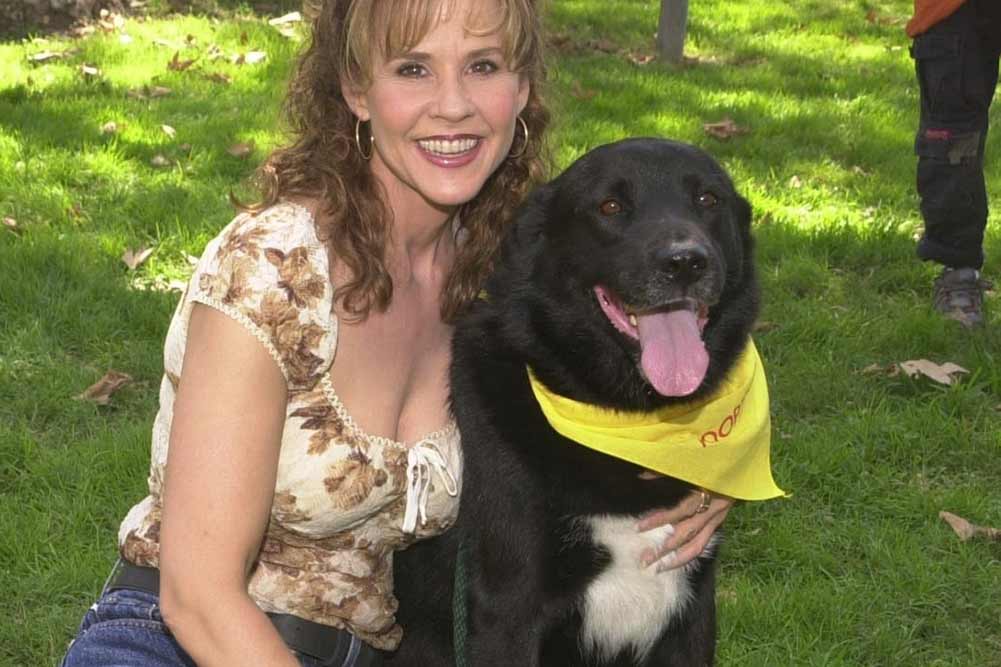
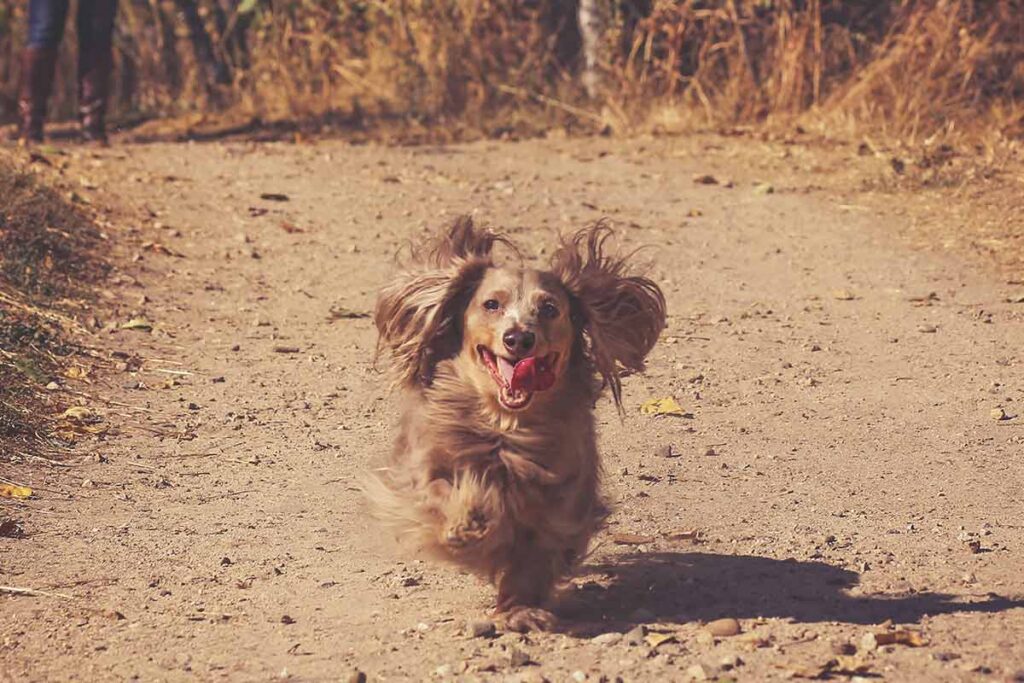
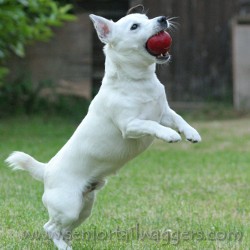
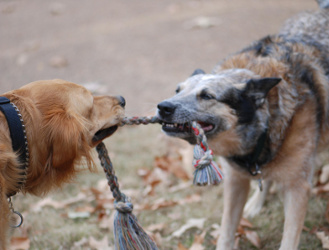










Be the first to comment